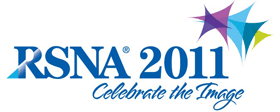
Abstract Archives of the RSNA, 2011
LL-MKS-TU2A
Tomosynthesis: A Long Forgotten Imaging Tool becomes a Fierce Competitor to CR in Follow-up Examinations of Pathologies in Hands
Scientific Informal (Poster) Presentations
Presented on November 29, 2011
Presented as part of LL-MKS-TU: Musculoskeletal Imaging
Robert Lothar Duschka MD, Presenter: Nothing to Disclose
Yulia M. Levakhina DIPLPHYS, Abstract Co-Author: Nothing to Disclose
Thorsten Buzug, Abstract Co-Author: Research grant, Siemens AG
Peter Hunold MD, Abstract Co-Author: Speaker, Bayer AG
Joerg Barkhausen MD, Abstract Co-Author: Nothing to Disclose
Florian M. Vogt, Abstract Co-Author: Speaker, Bayer AG
Tomosynthesis is an accepted imaging tool in breast cancer screening. Several studies concluded that digital tomosynthesis is a noteworthy imaging tool with the potential to become a routine examination method. The aim of this study was to show the potential of tomosynthesis in the detection of pathologies of joint margins and spaces of the hand.
Firstly, conventional radiographs (CR) of hands from donors who gave their bodies for medical education and research post mortem were examined to identify those with pathologies in joint margins and spaces. Twenty hands with degenerative alterations of joint spaces and wrist were identified. Tomosynthesis then was performed on the specimens at 35 KV and a tube current of 125mAs using an x-ray tube motion over an arc of ± 25°. CT-scans of hands were performed to serve as a standard of reference. Reconstructed studies of tomosynthesis were read by experienced radiologists to evaluate the visibility of pathologies in joint margins and space. Image quality was assed on a 5-point Likert scale.
Up to 35 in-focus planes were generated in one complete scan. All datasets could be acquired within 30s and the images were reconstructed without any loss of data. Each reconstructed image provided a matrix of 2500x1500 pixel requiring >7 MB disc space. Digital tomosynthesis delivered high resolution slices. These studies showed a significant better delineation of joint margins, space and trabecular structure compared to conventional radiographs and a higher spatial resolution compared to CT. Moreover, tomosynthesis showed significantly more lesions than conventional radiographs and was nearly as significant as CT.
Digital tomosynthesis delivers high quality cross sectional images within a very short acquisition time. Furthermore, tomosynthesis is more precise in the detection of bone lesions and pathologies of joint margins in comparison to CR and lower radiation dose compared to CT.
Tomosynthesis is a high-resolution image acquisition method that may become an attractive alternative to CR in follow up examinations of joint diseases and bone lesions.
Duschka, R,
Levakhina, Y,
Buzug, T,
Hunold, P,
Barkhausen, J,
Vogt, F,
Tomosynthesis: A Long Forgotten Imaging Tool becomes a Fierce Competitor to CR in Follow-up Examinations of Pathologies in Hands. Radiological Society of North America 2011 Scientific Assembly and Annual Meeting, November 26 - December 2, 2011 ,Chicago IL.
http://archive.rsna.org/2011/11007516.html

